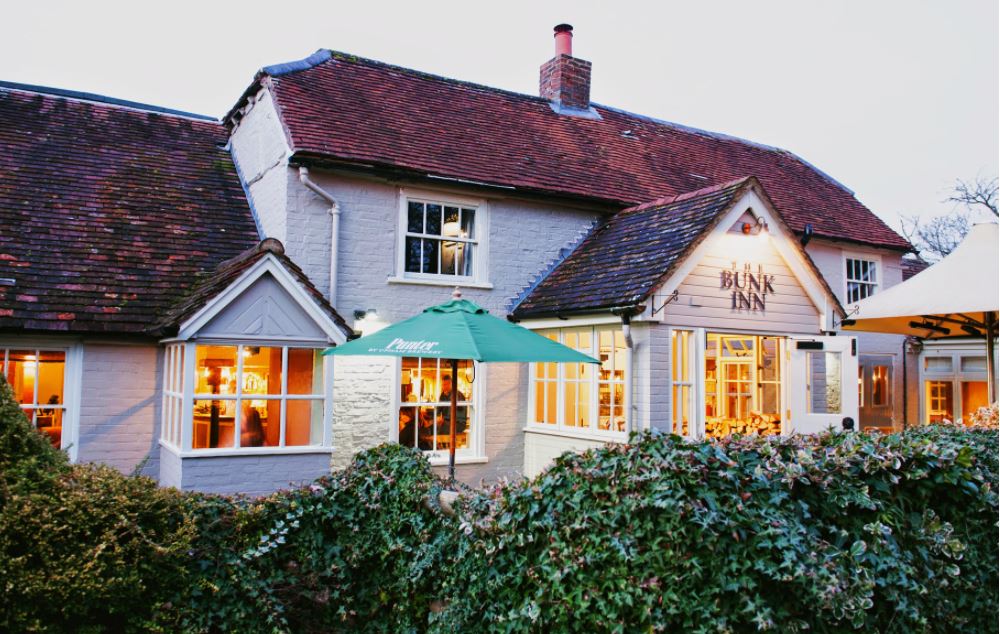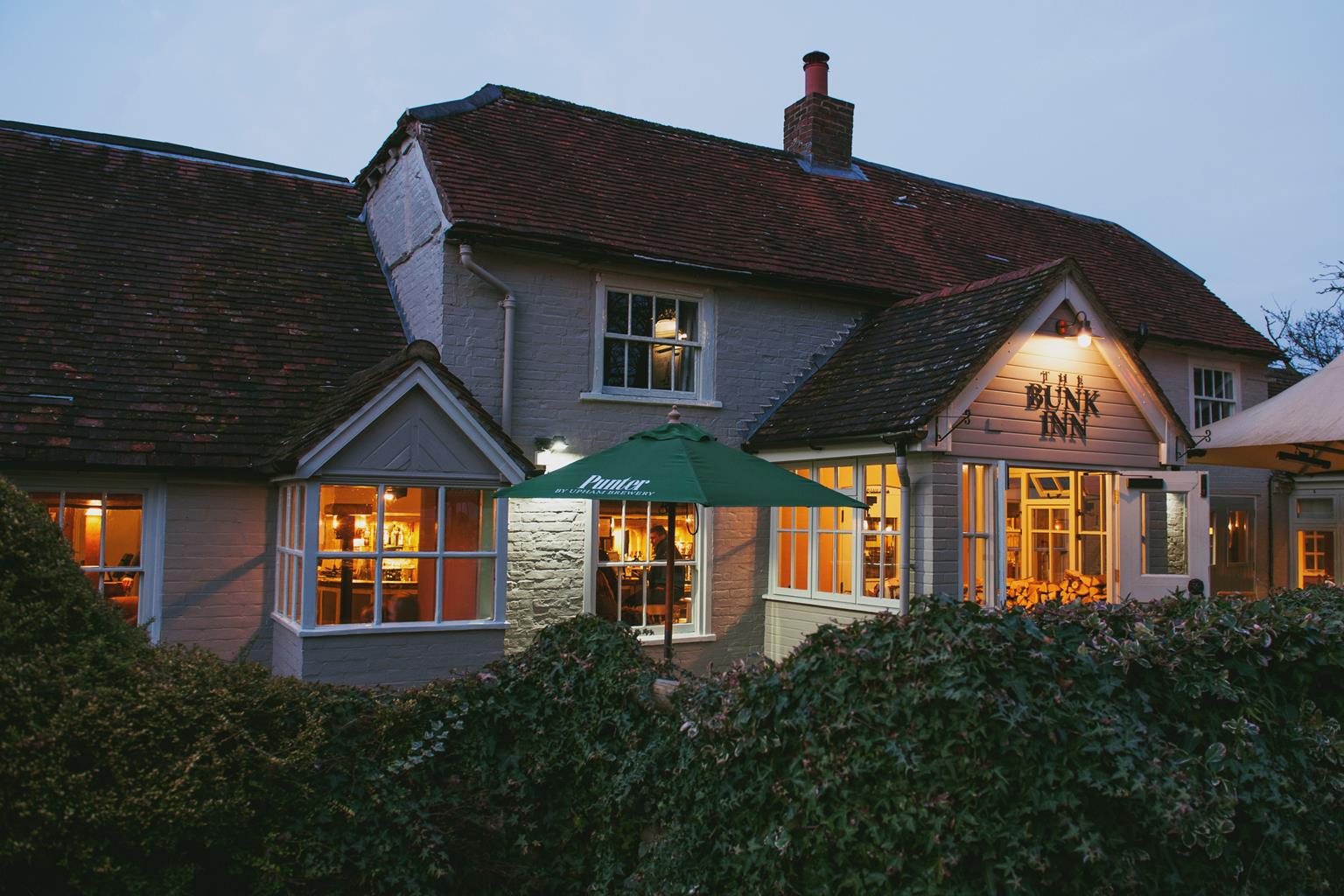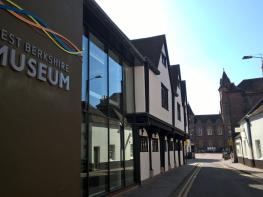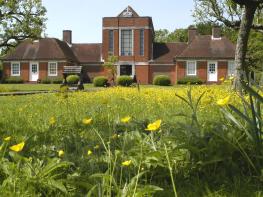This modern hotel is located in a lovely country location between Newbury and Basingstoke and…
Wasing Park and Brimpton

6 miles (9.7kms)
About the walk
The English village is one of the key elements that have helped to shape the rural character of this country over the centuries. England's village communities are etched into the fabric of its society, reflecting a way of life that is the envy of others. However, there is concern that some time-honoured traditions are being eroded. The village is such a vital and integral part of our rural landscape that, despite the tide of social change in the country, it is likely to survive – though, almost certainly, in a different form.
Berkshire, like Buckinghamshire, is blessed with many fine villages that, thankfully, have stood the test of time and remained largely intact. Some have fallen victim to planning blight and seen their boundaries expanded in recent years, while others have successfully fought off late 20th-century development, their pride and spirit intact.
A survivor
One such village that has so far avoided change is Brimpton, just to the south of the A4, between Newbury and Reading. Bounded to the north by the River Kennet and to the south by the lesser-known River Enborne, Brimpton, in the main, lies at the end of a breezy ridge. As a village it's like hundreds of others around the country, but it is that similarity that makes it a typical English rural community. Look closely and you'll see that its key component parts remain in place – the shop and post office, the public house, the primary school and the church are all here.
Village records reveal a fascinating insight into how Brimpton has evolved over the years into the community you see today. As with most rural settlements, Brimpton was once part of the feudal system, shaped and controlled by landowning families, aristocrats and local benefactors. In 1854 the Countess of Falmouth built almshouses for elderly couples and widows, while the Earl donated a small piece of land on which to build a school. Later, when the church was rebuilt, local squire James Blyth objected to the pub being near the church and gave land for a new site.
The Wasing Estate Between Brimpton and Brimpton Common lies the 4,000 acre (1608ha) Wasing Estate, established in 1759 and under the stewardship of the same family ever since. The heart of the estate is the small complex of buildings known as Wasing Park. Clustered around the simple yet lovely Church of St Nicholas, largely rebuilt in 1761, are tall trees and several beautifully restored ancient buildings. The first impression is of having stumbled upon a medieval village in the kind of tranquil bucolic setting that has long vanished from England. Wasing Park is now used to host wedding ceremonies, and is a popular reception venue.
Walk directions
Follow the path opposite The Pineapple across two stiles to the road. Cross over to join a byway, and follow it round to the right and across the common. When it swings sharp left, go straight on along the public footpath, still a track. Take the path to the right of Woodside, bear left at a T-junction (signed 'Permitted Bridleway') and follow the path. Where it joins a track, veer off left at a waymark, following the field-edge path. Just past the corner of the field veer to your right and follow a narrow path (this may be overgrown). Look for an opening in the trees ahead, cross a bridge, and continue as the path goes down then up, and turns right at a track. At the first junction go right, following the battered old sign 'For visiting (Wasing) church and graveyard only'. (If you reach a tarmac lane you have missed the right turn and will have to go back.)
Pass a kissing gate, take the track, turn left at the bend and cut through the wood. Go through the gate signed 'Private Wasing Estate', and the small complex of buildings known as Wasing Park is directly ahead. Cross a track, go through a kissing gate, then through a field to visit the church via another kissing gate.Return to the drive. Turn right and pass between gate piers and continue ahead at crossroads, over a cattle grid. Follow the drive down to the road beyond a gate and a lodge.
Bear left to a junction, then right over the River Enborne to a fork. Keep left onto Wasing Road and turn right at the 'Wasing Estate Shalford Lakes' sign. Go through a gate, with the lakes over your right shoulder, to veer left along a grassy track, following the edge of the field (Brimpton Church is visible to your left). Make towards the houses (ignore a gate to your left, across fields) to a junction, and turn left by a galvanised gate.
Follow the path to the road and turn right. After a few paces go left to join the next path. Keep over to the left edge of the field, go through a kissing gate in the top corner and veer right. Turn right almost immediately you are through the next kissing gate to reach a housing estate. Turn right at the road, pass the Three Horseshoes pub and walk along to the church, following the waymarked path around the pretty churchyard.
The path leads into fields from the top left-hand corner of the churchyard. Just beneath the second set of power lines turn left, with a tall transmission mast on the horizon directly ahead. Head south to Hyde End Lane via three gates.
Turn left, keeping right at the fork onto a stony track, and passing entrances to The Lodge and Hyde End House. Look for a stile to the left of a footbridge and cross a meadow. Over the stile, follow the river bank to a footbridge and stile. Cross over and take the path through the wood to a brick bridge. Cross the road and follow the track, taking the path to the left of it between the woodland edge and wire fence. Cross a stile and plank bridge, and make for a bridge in the far right corner of the field. Follow a line of trees to a stile and cross the next pasture towards buildings. Approaching a gate and a cottage, veer left to a stile. Cross to another stile by the road, opposite The Ship Inn. Turn left here and walk along the road (B3051) back to The Pineapple.
Additional information
Field and woodland paths and tracks, parkland drives, meadow, road and riverside; 9 stiles
Common, parkland, woodland and meadow
Lead required in Wasing Park
OS Explorer 159 Reading, Wokingham & Pangbourne
Limited spaces opposite The Pineapple pub
None on route
WALKING IN SAFETY
Read our tips to look after yourself and the environment when following this walk.
Find out more
Also in the area
About the area
Discover Hampshire
Hampshire’s varied landscape of hills and heaths, downlands and forests, valleys and coast is without rival in southern England. Combine these varied landscapes and terrains with secluded and idyllic villages, complete with thatched and timber-framed cottages and Norman churches, elegant Georgian market towns, historic ports and cities, restored canals and ancient abbeys, forts and castles, and you have a county that is paradise for lovers of the great outdoors.
If you’re a walker, stride out across the high, rolling, chalk downland of the north Hampshire ‘highlands’ with far-reaching views, walk through steep, beech-clad ‘hangers’ close to the Sussex border. Or perhaps take a gentler stroll and meander along peaceful paths through unspoilt river valleys, etched by the sparkling trout streams of the Test, Itchen, Avon and Meon. Alternatively, wander across lonely salt marshes and beside fascinating coastal inlets or, perhaps, explore the beautiful medieval forest and heathland of the New Forest, the jewel in Hampshire’s crown.
Nearby stays
Restaurants and Pubs
Nearby experiences
Recommended things to do
Why choose Rated Trips?
Your trusted guide to rated places across the UK
The best coverage
Discover more than 15,000 professionally rated places to stay, eat and visit from across the UK and Ireland.
Quality assured
Choose a place to stay safe in the knowledge that it has been expertly assessed by trained assessors.
Plan your next trip
Search by location or the type of place you're visiting to find your next ideal holiday experience.
Travel inspiration
Read our articles, city guides and recommended things to do for inspiration. We're here to help you explore the UK.













